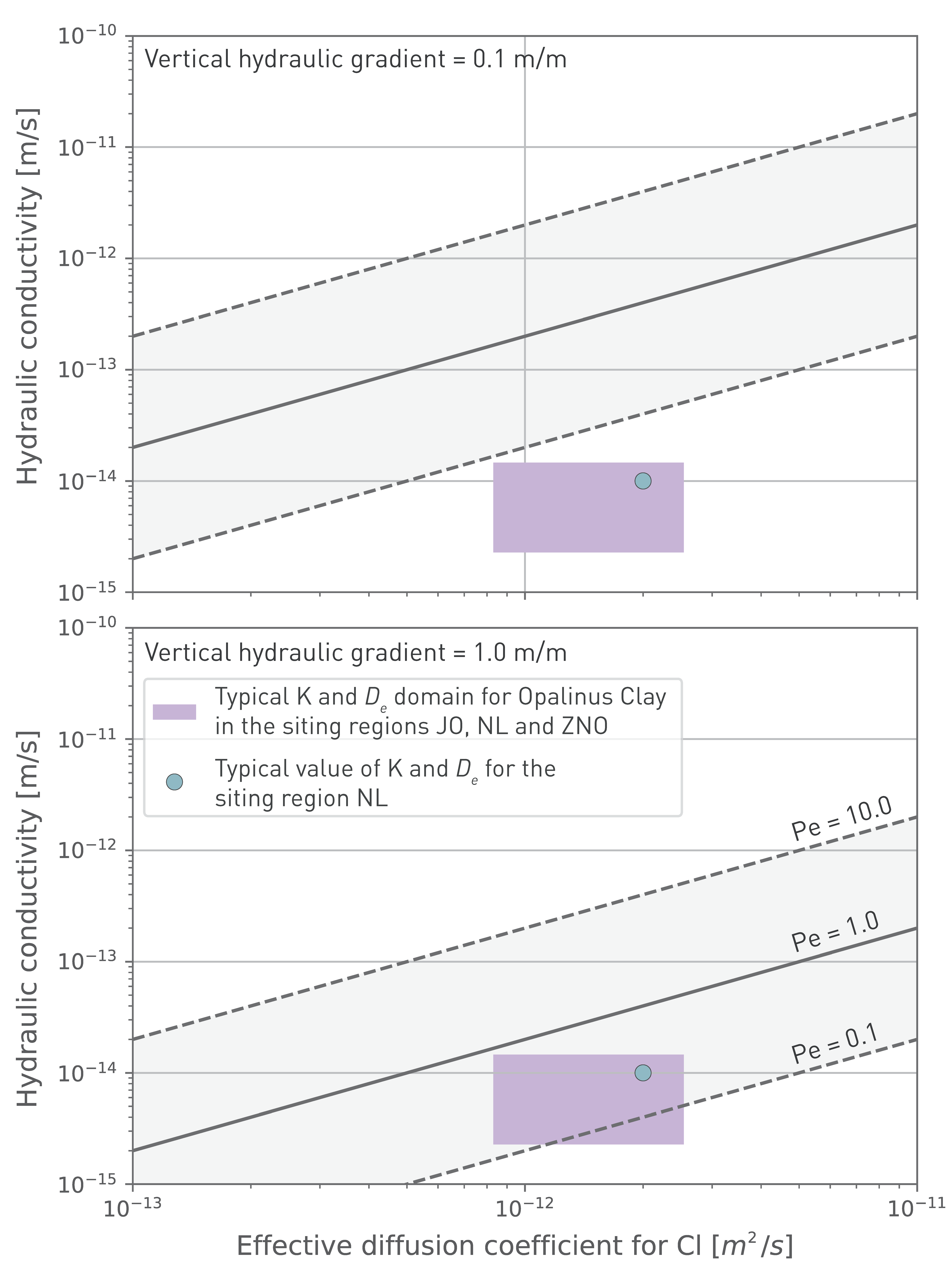Key points:
- Molecular diffusion is the dominant transport mechanism in the Opalinus Clay and in adjacent low-permeability clay-rich rocks at formation scale.
The relative importance of diffusive compared to advective solute transport can be evaluated with the so-called Peclet number. This dimensionless number is defined as the ratio between the rate of advection to the rate of diffusion over a given characteristic length scale. Depending on the characteristic length used and the field of application, different definitions of the Peclet number exist in the literature (Huysmans & Dassargues 2005). To evaluate the importance of diffusion versus advection in the Opalinus Clay, a Peclet number similar to the one defined in de Marsily (1986) and Freeze & Cherry (1979) is considered:
![]()
where |q| is the module of the Darcy flux [m/s], |v| the module of the porewater velocity [m/s], I the characteristic length of the porous medium in [m] and De and Dp the effective and the pore diffusion coefficient, respectively, of a tracer in the porous medium in [m2/s]. When this Peclet number equals 1, transport by advection is almost equally important as transport by diffusion. If Peclet numbers are < ~ 0.1 or > ~ 10, diffusion or advection, respectively, dominate.
Here, the main interest is in transport at the formation scale. Accordingly, a characteristic length I of 50 m, which reflects the distance between the deep disposal tunnels and the upper and lower limits of the Opalinus Clay, is chosen. The module of the Darcy flux |q| was calculated using a vertical hydraulic conductivity of 1 × 10-14 m/s and hydraulic gradients i of 0.1 and 1.0. An effective diffusion coefficient De of 2 × 10-12 m2/s for chloride was considered (Fig. 5‑51).
The evaluation for chloride shows that, even for a high vertical hydraulic gradient of 1, advection is hardly important (Fig. 5‑56). For more likely lower gradients (e.g. 0.1), the properties of the Opalinus Clay ensure dominance of diffusive transport. That is, the Peclet number for characteristic properties is well below 1.
Additional transport mechanisms were evaluated in earlier publications (Soler 1999, 2001, Nagra 2002, Marschall et al. 2004). The overall conclusion was that coupled phenomena will only have a very minor impact on radionuclide transport in the Opalinus Clay, in terms of fluid and solute fluxes. Recent work considered thermo-osmosis to explain pore pressures at Mont Terri (Gonçalvès et al. 2023). However, the study confirmed that diffusion remains the dominant transport mechanism also under consideration of this additional driving force.

Fig. 5‑56:Dominant transport mechanisms in the Opalinus Clay based on the Peclet number illustrated for chloride
The figure shows the range of hydraulic conductivity and effective diffusion coefficient compared to isolines of reference Peclet numbers Pe (i.e. 1.0 and bounding values of 0.1 and 10.0). The upper and lower figures consider a hypothetical hydraulic gradient across the Opalinus Clay of 0.1 and 1.0 respectively.

